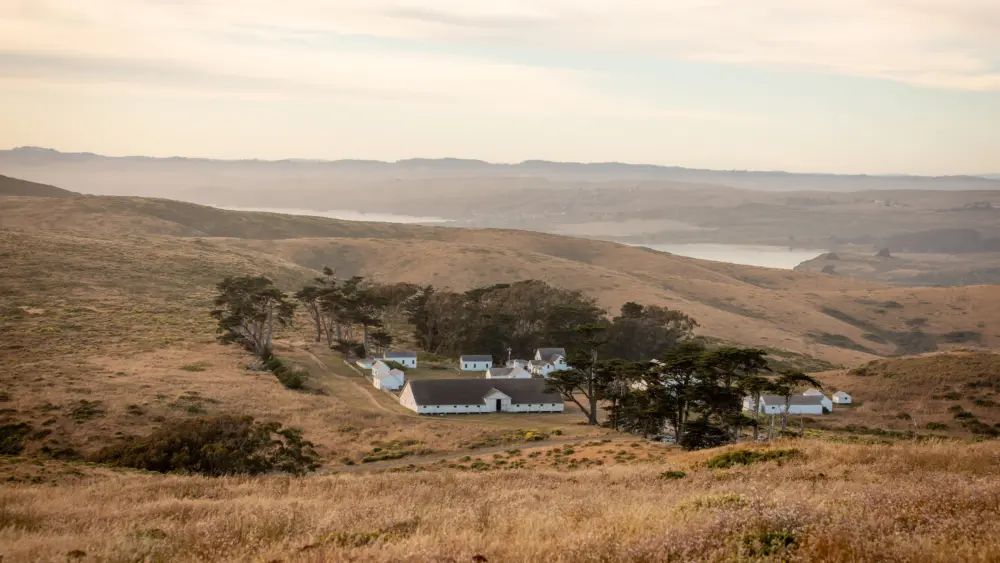The City of San Rafael entered formal negotiations to sell off a downtown parking lot that could be developed into 240 apartments and a 30,000-square-foot food pavilion.
The talks, between the city and the Berkeley-based developer Gladstone Management Group may result in the sale of San Rafael’s dual-story 171 space parking garage at Lootens Place and Third Street. The spaces would be replaced in the new project using mechanical stacking equipment already in use in more space-crunched urban settings.
The proposed development would be partially underground, and will no doubt find favor with public transit advocates as the complex location is within walking distance of public transportation, including the SMART Train station.
The project might also find support with workforce housing fans who could see the possibilities for a high-density development supplying lower-cost housing and still penciling out for Gladstone, especially with the revenue thrown off by the proposed food hall.
That facility is being likened to the Oxbow Market in Napa or the Ferry Building in San Francisco, locations that have become beacons to foodies from throughout the Bay Area as well as touristas feeling puckish.
Gladstone would like to build a 75-foot-tall complex consisting of six stories, with the food pavilion on the ground floor and 150 apartments above that. The inclusion of an underground parking facility could allow for 90 other apartments.
The Berkley-firm has some leverage with the city in that it already owns property downtown. It owns adjacent property on both Third Street and Fourth Street. On the other hand, the other properties could make for some interesting negotiations for the city if it got creative and considered swapping of properties and ways for both San Rafael and Gladstone to emerge winners from the project.
Gladstone has not yet submitted plans to the city.
Amazon invasion and Nordys’ taxes
At this writing, online behemoth Amazon says it will open an Amazon 4-star retail outlet in the Village at Corte Madera on Black Friday. The brick-and-mortar locale will sell toys and games, books, consumer electronics as well as kitchen and home products that receive high ratings online, or are rated by the retailer as best sellers.
The Village is best known for upscale soft goods as well as Apple and Tesla shops. Nordstrom anchors one end of the shopping center and Macy’s the other. RH is currently putting the finishing touches on a new cathedral to large furniture in the parking lot adjacent to the rest of the mall. The company hopes to open the new store next month.
What impact Amazon will have on the other mall tenants is uncertain. Most Amazon customers are in love with the far reaching variety of the online site, as well as the quick shipping and the customer reviews.
On a related note, the Marin County Assessment Appeals Board ruled Nordstrom is on the hook for higher taxes. The retailer told the board the $68 million in changes it made from 2012 to 2014 were repairs and remodeling, not new construction.
The board wrote: “The improvements were a major renovation and therefore converted the entire property to the substantial equivalent of new.”
In other words, get out your checkbook.
Your Marin moment
The Public Power Shutoffs (PPSs) brought to you by Pacific Gas and Electric have been more than a little annoying, though anyone who lived through the Tubbs Fire can certainly make the argument some annoyance is a small price to pay.
But with a few PPSs in our rearview mirror, questions are being asked about what a long-term model will look like, especially given PG&E’s precarious financial standing.
While Sacramento tried to balance safety and practicality, at some point, having predictability when it comes to power for the fifth largest economy in the world will become the issue.
The experience of Scotty’s Market in San Rafael is a local example of how this issue will gain volume. The family-owned market in the Terra Linda neighborhood of the Mission City with the best house-made Caesar dressing and croutons on the planet, lost someplace between $85,000 and $200,000, thanks to the PPSs. For a grocer like Safeway, with more resources for back-up generators, the ability to balance losses against operating stores and more access to capital, the PPS impact might not be as great. But at what point will larger companies faced with greater impact begin to weigh in?
The Stanford Woods Institute for the Environment put the cost of the shutdowns at $2.5 billion. A million here and a million there and pretty soon it’s real cash.
Bill Meagher is a contributing editor for NorthBay biz. He is a senior editor at The Deal, a Manhattan-based financial news outlet where he covers small cap equity, alternative investment and does investigative reporting. He wishes you the happiest of New Years and reminds you that the Giants open Spring Training next month.
Author
-

Bill Meagher is a contributing editor at NorthBay biz magazine. He is also a senior editor for The Deal, a Manhattan-based digital financial news outlet where he covers alternative investment, micro and smallcap equity finance, and the intersection of cannabis and institutional investment. He also does investigative reporting. He can be reached with news tips and legal threats at bmeagher@northbaybiz.com.
View all posts




